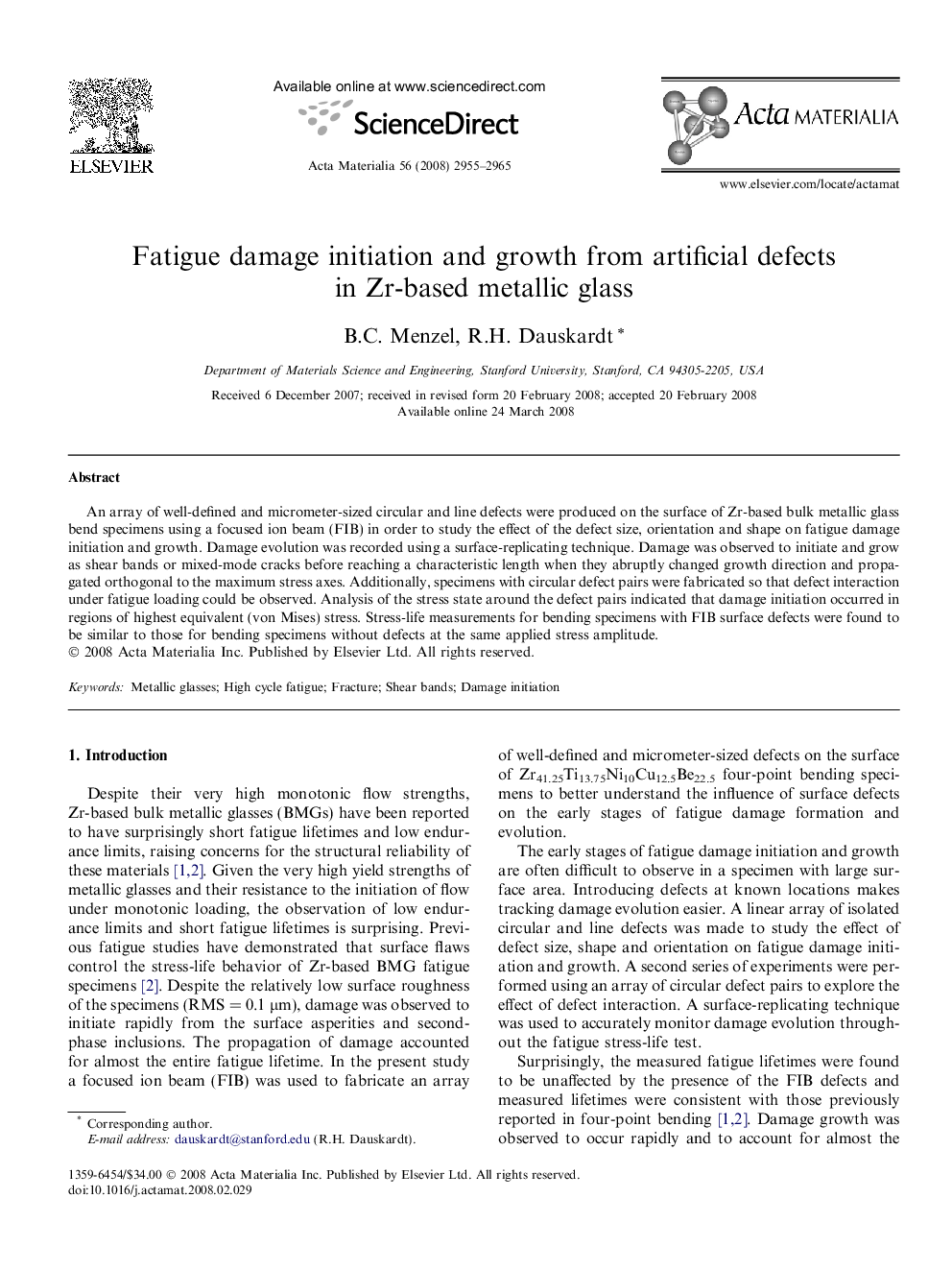| Article ID | Journal | Published Year | Pages | File Type |
|---|---|---|---|---|
| 1449055 | Acta Materialia | 2008 | 11 Pages |
An array of well-defined and micrometer-sized circular and line defects were produced on the surface of Zr-based bulk metallic glass bend specimens using a focused ion beam (FIB) in order to study the effect of the defect size, orientation and shape on fatigue damage initiation and growth. Damage evolution was recorded using a surface-replicating technique. Damage was observed to initiate and grow as shear bands or mixed-mode cracks before reaching a characteristic length when they abruptly changed growth direction and propagated orthogonal to the maximum stress axes. Additionally, specimens with circular defect pairs were fabricated so that defect interaction under fatigue loading could be observed. Analysis of the stress state around the defect pairs indicated that damage initiation occurred in regions of highest equivalent (von Mises) stress. Stress-life measurements for bending specimens with FIB surface defects were found to be similar to those for bending specimens without defects at the same applied stress amplitude.
